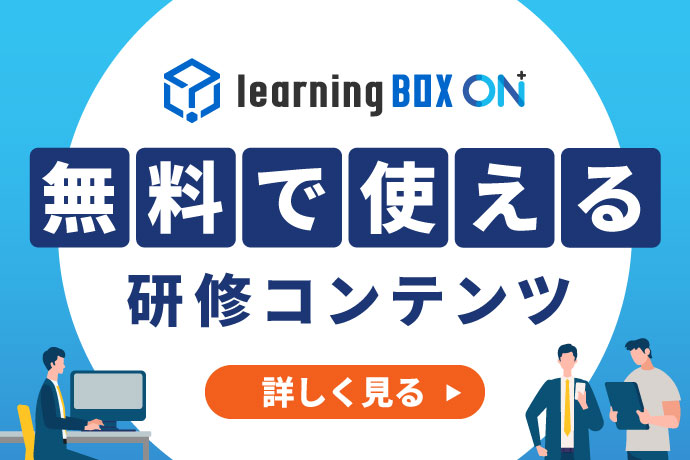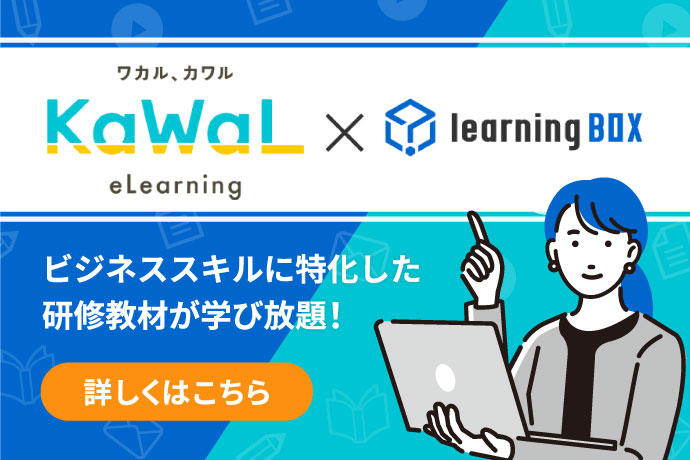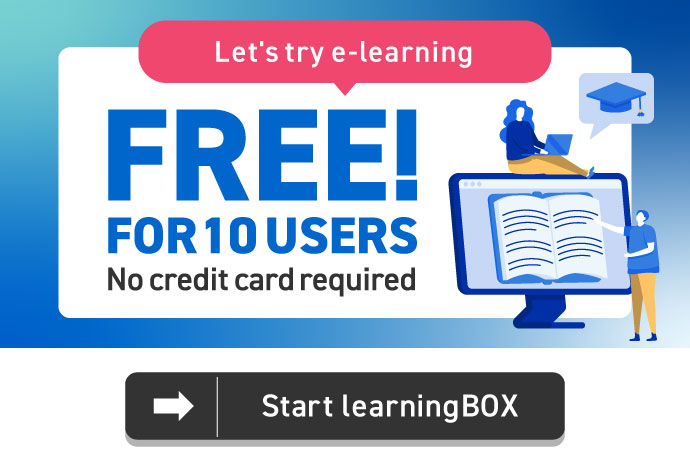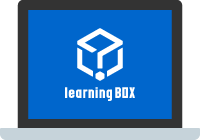Knowledge Sharing
Improve your organization's capabilities
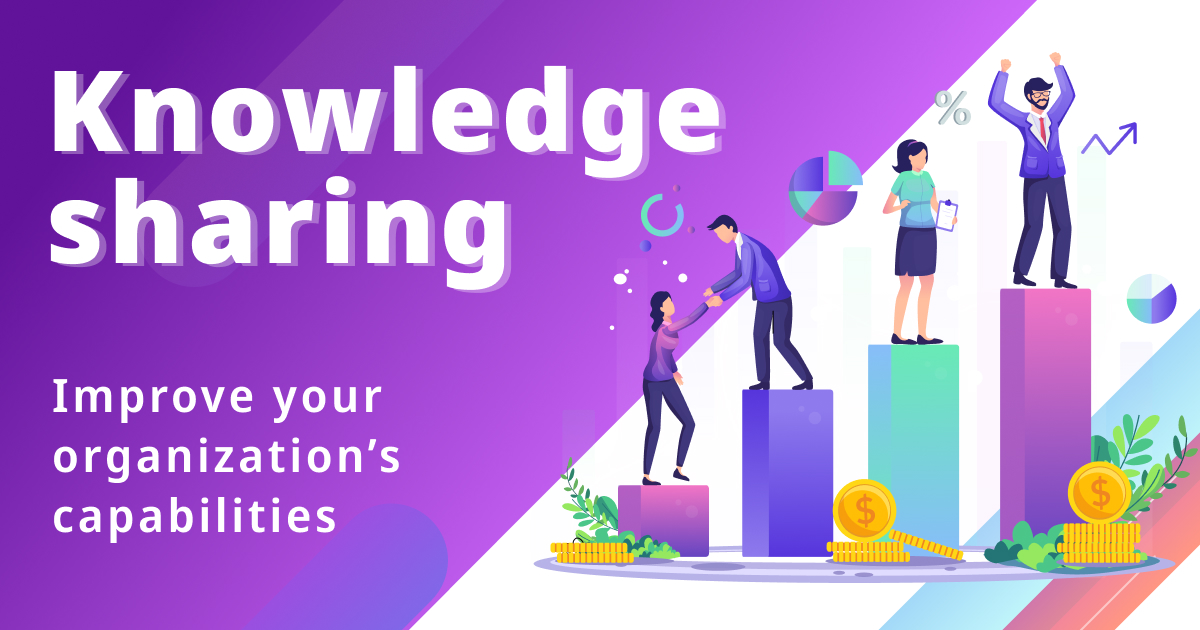
What are assets in your business? Apart from cash or raw materials, unique knowledge and skills possessed by employees are also defined as key business assets. This is because their crucial information and skills are becoming more important to enhance the competitiveness of company as a whole even in this fast-changing world.
As one of the solutions, knowledge sharing has been shed the light on in recent years.
This article provides the keys for successful initiatives when implementing knowledge sharing in your workplace.
Contents
Fundamentals of Knowledge Sharing

Knowledge sharing plays a crucial role to improve productivity enhancing overall skills.
Let us elaborate on the following topics.
What is Knowledge Sharing?
Knowledge sharing is a method of sharing experience and know-how throughout an organization that has a positive impact on a company's sales activities. "Knowledge" is introduced with the aim of spreading the knowledge and problem-solving techniques of talented people throughout the organization, leading to higher productivity and sales, and faster decision-making.
Knowledge management, also known as KM, is a series of activities to consolidate knowledge within an organization, fostering deeper understanding and application of the area.
Types of Knowledge
There are two types of knowledge: tacit and explicit knowledge. As for successful knowledge sharing, tacit knowledge should be shifted to explicit knowledge.
Tacit Knowledge
Tacit knowledge is subjective knowledge based on personal experience and intuition that is difficult to verbalize or visualize. This type of knowledge includes rule of thumb acquired in the field, sales techniques, etc.
Tacit knowledge is difficult either to express or share with others. It tends to become a personalized knowledge, making it difficult to utilize throughout an organization without the person. This means crucial information and skills that he or she gains cannot be handed over after his or her retirement.
Explicit Knowledge
Explicit knowledge is easy to articulate objectively and logically. This type of knowledge is captured in tacit knowledge possessed by excellent workforces and highly shareable in an organization. Visualized information including manuals help employees to easily understand abstract concepts, contributing to knowledge management strategies.
Back to ContentsAdvantages and Challenges

When you introduce knowledge sharing, understanding its advantages and challenges are important steps in order to maximize efficiency. The following will be a big help to make it successful.
Pros
Improve work efficiency and productivity
Individuals’ successful business practices should not be underestimated. Sharing these experiences will result in improving work efficiency and productivity, and be the key step to create experts boosting the standard of the workforce as well as reducing the skills gap.
Knowledge sharing plays a crucial role not only in sharing successful experiences but also in sharing failures. The reason lies in the fact that problem-sharing improves problem-solving skills, preventing the same failures from their experiences.
Alignment
Internal communication accelerates constant collaboration across departments in an organization sharing the same objectives, which results in keeping information up-to-date and quick decision making.
This method is more effective when there are very few interactions between departments on a daily basis because new ideas will be generated among employees with different perspectives.
Accumulating knowledge and know-how
Well-constructed knowledge sharing refers to centralized knowledge management. Beneficial information and skills each individual possesses is accumulated in an organization, stimulating creativity and enhancing overall skill development.
This will also contribute to employee shortage. Many industries and sectors are now facing the serious problem, however, knowledge sharing can tackle current business challenges, fostering employee engagement.
Cost Saving
When knowledge sharing is well-permeated in your whole culture, handovers are much easier and smoother. Employees can reduce time for this essential process, leading to cost savings as a result. Furthermore, it can prevent loss of trust, maintaining customer satisfaction.
Diverse Working Style
COVID-19 accelerated the diversification of workstyle. The number of companies implementing remote working has increased rapidly and some organizations face challenges in communicating and managing employees who work at home. This disconnected situation tends to bring isolated knowledge among employees, and it is difficult to accumulate essential knowledge and know-how within an organization.
From this point of view, fostering knowledge sharing culture will prevent this isolated knowledge corresponding to diversified workstyles as well as activating business solutions.
Note
Implementation Costs
For practical knowledge sharing, tools or platforms need to be implemented. While some services are offered for free, initial and running costs should be taken into account.
In addition to the budget, specify features, policy and usability in advance to find the best fit for your organization.
Culture Cultivation
Another challenge lies in the fact that many high-skilled employees have little time to spend much time on knowledge sharing. This may slow down cultivating knowledge sharing culture in your organization.
Also, the use of a performance-based approach may discourage high-skilled employees to share knowledge that they possess. To amplify their active attendance, specific benefits of knowledge sharing for them need to be well-understood beforehand.
Back to ContentsKeys to Success

What is needed for practical knowledge sharing to stimulate your business development? The following point out three keys to success.
Who is Eligible?
The role of knowledge managers is vital. They oversee the information shared in the organization so that employees can access crucial information and knowledge properly. For instance, knowledge managers may hold a briefing session to explain the policies for knowledge sharing to maximize efficiency among employees. Besides, they are required to grasp challenges the organization faces and decide how to operate each initiative.
Knowledge may be shared across divisions or departments, and knowledge managers are responsible for organizing company information as a whole. When implementing knowledge sharing, select eligible person to make crucial information and knowledge as company assets stick.
SECI Model
SECI stands for "Socialization," "Externalization," "Combination," and "Internalization." This conceptual framework explains that tacit and explicit knowledge are converted into organizational knowledge so that each of them can be stored in the organization. Furthermore, employees can learn and create new knowledge through practices and interactions.
For the robust knowledge sharing through this framework, organizational efforts are required to ensure a company environment in which knowledge can be easily shared among employees. For instance, incentives may be a good trigger to accelerate this process in addition to offering opportunities to share knowledge.
Implementation of Effective Tools
Select and implement an effective tool. This type of tool is often called knowledge sharing tools, knowledge management tools, or knowledge bases. Many of them provide communication functions including chat tools, which enables employees to ask and answer questions more easily. These functions will result in fostering active knowledge sharing in the organization.
When selecting and implementing a knowledge sharing tool, usability is one of the most important factors. Consider it can be easily used by a wide range of employees regardless of ages and positions.
Also, once the number of documents increases, it will take time to find the target resource. To prevent this expectation, search functions play important roles to smoothly extract essential information which the organization possesses. Remember that an appropriate tool will increase employees’ engagement and more active participation will be expected.
Summary

In this article, we have dived into the features of knowledge sharing, advantages and challenges, and keys to success. Knowledge sharing should not be underestimated in that consolidation of isolated knowledge among employees accelerates your business.
When it comes to effective tools, learningBOX will be a good ally when you start knowledge sharing in your organization. Creating and delivering manuals, tracking employees' progress etc., you can manage everything needed for knowledge sharing or learning and development online.
The intuitive design allows you to create your own e-learning content easily even if you have little computer skills. Free Plan offers up to 10 accounts for free, and you can try almost all of the learningBOX’s functionalities without expiry day.
▼You may also like:
Back to Contents


-
Discover rich featuresService Guide
-
Feel free to contact usGet in Touch
-
Try our Free PlanTry Free Plan



